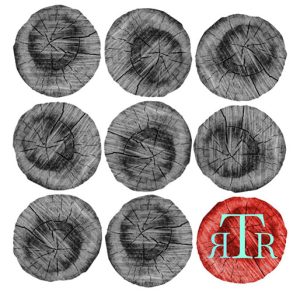U.S. 1 Worksheets – 2012
Volume 57
2012
Annual
Charles Davenport
Nearly 50 years ago, a few poets gathered near Princeton, NJ, to read their poems to each other. According to the editors of U.S. 1 Worksheets, this small group of poets formed the U.S. 1 Poets’ Cooperative, and many of the original poets are still involved in the Cooperative and continue to submit to the journal, which is headquartered in the Princeton suburb Kingston, NJ.
Nearly 50 years ago, a few poets gathered near Princeton, NJ, to read their poems to each other. According to the editors of U.S. 1 Worksheets, this small group of poets formed the U.S. 1 Poets’ Cooperative, and many of the original poets are still involved in the Cooperative and continue to submit to the journal, which is headquartered in the Princeton suburb Kingston, NJ.
Who could blame the editors if they chose to publish only poets living along the corridor, or at least poetry that addresses life in the hundreds of communities along its path? After all, U.S. 1 is the eastern most U.S. Highway and snakes its way up the Eastern seaboard from Maine down to Florida for nearly 2,400 miles. Thankfully, at least for those who don’t live along the East Coast, the U.S. 1 Poets’ Cooperative includes poetry in Volume 57 of U.S. 1 Worksheets from as far away as the Philippines, as well as a good sampling of work from some notable poets across the United States.
A fair amount space in this edition of U.S. 1 Worksheets devotes itself to dying, especially from one form of cancer or another, and worrying over what will or won’t be left behind. An example of this concern is illustrated in Vida Chu’s simple but elegant piece, “The Last Family Portrait,” in which the signs of chemotherapy have not begun to visibly manifest themselves in the poem’s narrator. A photographer composing a portrait of a family of three small children, the narrator, and the narrator’s wife is unaware that this may be the family’s last portrait and that the narrator wishes for a quick resolution. To the photographer, the narrator says, we are just another family:
Thankful that I still have hair on my head
I curl my lips, watch my wife squeeze out a brave smile
. . . . . . . . . . . . . . . . . . . . .
I wish the piano hanging over
my head would drop
dying is such hard work
Some of the most poignant moments in this edition of U.S. 1 Worksheets are in poems about aging. Carefully chosen combinations of consonants and line breaks produce quiet certainty and long-drawn sighs in the best pieces. It isn’t quite sadness reflected in these poems, but rather a sort resignation on the part of the poets that seems to trump any deeper thoughts about whatever the “meaning of life” might be.
In his poem “The View from Assisted Living,” poet Hayden Saunier describes a landscape in which the appearance of objects change as the angle of sunlight changes over the course of a day. In fact, all the windows of the assisted living facility face west; consequently, as the residents and the narrator look out the westward windows, the only evidence they have of a rising sun is its yellow light that “first colors the top of a huge construction crane” where a new hospital is being built. How sad to always miss what you know exists, but can never see; even sadder is that a new hospital must be built to accommodate even more patients, more elderly in assisted living. On good days, as the sun moves lower in the western sky, the residents become almost angelic in its glow; on others, the transition from day to night is more like a candle has been extinguished:
Light slides up our faces,
our brows, what’s left of our hair,
burns our eyes as it burns up
the back side of maple and crane.
Some days, who knows why,
The light simply goes out and it’s night.
Poet Janice Wilson Stridick is a member of the U.S. 1 Cooperative and lives in New Jersey, and her most recent collection of poetry, which is still largely a work in progress, is about her mother, Alice Steer Wilson, and the art her mother created. Underneath the biography, as is the case with most biographies, is the author seeking the approval of deceased parent. Janice compares herself to an unfinished portrait, one that her mother considered too flawed and too raw to ever accept. Near the end of her mother’s life, when the portrait is finally finished, Janice receives the approval she had always wanted:
She painted through chemo
postponed death,
initialed, at last, my portrait
as I opened a chapter
about her, preparing to live
without her.
The U.S. 1 Poets’ Cooperative holds weekly meetings and workshops in the homes of its members and the group encourages anyone with an interest in poetry to attend. While some of the poetry in U.S. 1 Worksheets is not as strong as the pieces discussed here, so many of the poems in this journal are good that it is apparent that the workshops are productive. Additionally, the group co-sponsors a monthly reading series at the Princeton Public Library, and the editors nominate poets for the Pushcart Prize. With its 50th anniversary issue on the horizon, U.S. 1 Worksheets is worth keeping an eye on.
[us1poets.com]




